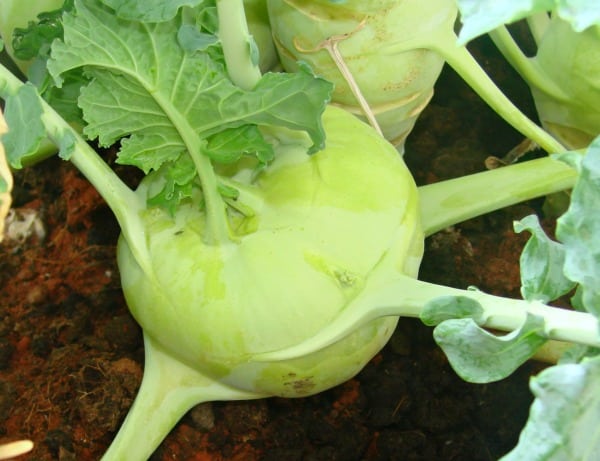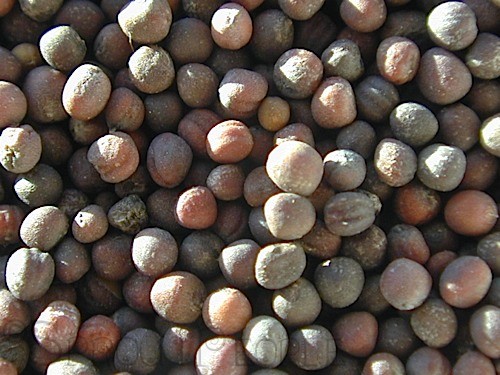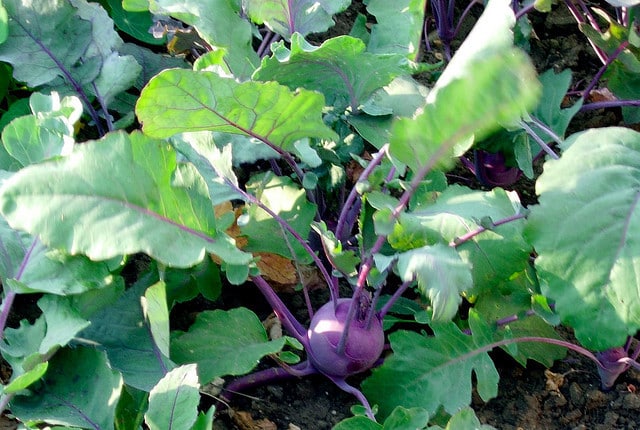(Knol-Khol) Kholrabi Cultivation Info:

Introduction of Kholrabi Cultivation:- Kohlrabi (Knol-Khol ) is an annual vegetable, and is a low, stout cultivar of cabbage. Kohlrabi can be eaten raw as well as cooked. Kholrabi vegetable is known by many names in India. It is popular in the states of Jammu & Kashmir, West Bengal, and Maharashtra, Assam, Uttar Pradesh, Punjab & some parts of south India. The commercial cultivation of Kholrabi is very limited. The fleshy edible proration is an enlargement of the stem, which develops entirely above ground and is used as a vegetable. It is an excellent vegetable if used at its early stage before it becomes tough and fibrous and edible preparations are made with both the stem and the leaves. This vegetable belongs to the family of “Cruciferaceae” and genus of “Brassica”. This vegetable also called as “German turnip:, “Turnip cabbage” in other parts of the world.
Health Benefits of Kholrabi (Knol-Khol) :-The following are the health benefits of Kholrabi (Kohlrabi).
- This vegetable is good for the circulatory system .
- This vegetable helps fight cancer.
- This vegetable promotes healthy digestion.
- This vegetable contains many B-complex vitamins.
- This vegetable boosts the immunity system.
- This vegetable assists muscle and nerve functions.
- This vegetable fights asthma and lung problems.
- This vegetable stabilizes blood pressure.
- This vegetable aids in weight loss.
Main Production States of Kholrabi in India:- Jammu & Kashmir, Assam, Uttar Pradesh, West Bengal, and Maharashtra, Punjab & some parts of south India.
Local Names of Kholrabi in India:- Noolkol(Telugu), நூக்கோல் (Tamil), Seema mullangi (Malayalam), (Punjabi), Navalkole (Marathi), Gaanth Gobhi (Hindi), Navil kosu (Kannada), Olkopi(Bengali).
Varieties of Kholrabi:- There are two kinds of varieties available in the market; one is early and other is late variety. Some of the promising varieties available in India are Sutton’s Earliest Purple, Golith White, Early White Vienna, King of the Market and Early Purple Vienna.
Climate Requirement for Kholrabi Cultivation:- Basically Knol- Khol(Kholrabi) is a cool season crop and thrives well in a relatively cool moist climate. The specialty of this vegetable is this can withstand extreme cold and frost conditions better than other cool-season crops. Seeds of knol- khol (Kholrabi) germinate well at 15°C to 32°C. This crop grows well with a monthly average temperature of 15°°C–20°C, maximum and minimum average being 24°C and 4.5°C.
Soil Requirement for Kholrabi Cultivation:- Kholrabi (Kholrabi) can be grown in wide range of soils. A soil rich in manures and fertilizers produces excellent knobs (tubers). Sandy loam soil is best suited for an early variety crop and clay or silt loam soils for higher yield and late variety crop. This crop will not thrive well in highly acidic soil. For better yield and quality of vegetable, the required soil pH is 5.5–7.0.
Propagation in Kholrabi Cultivation:- Kholrabi (Kholrabi) is propagated by seeds. It can also be propagated by cuttings such as tip cutting and leaf cutting. The seeds of this vegetable should be sown in lots from the end of August to the end of November for a continuous crop. Time frame of sowing of seeds varies from region to region and cultivar. About 1.5 kg of seed is required to cover the 1 hectare land. The seedlings should be raised in the nursery beds. About 4–5 weeks old seedlings can be used for transplanting.

Land Preparation, Spacing and Planting in Kholrabi Cultivation:- Plough the land 3 to 4 times and use disc harrow to get the soil fine tilth stage. In order to facilitate irrigation, preparation of beds and channels should be done. 4 to 5 week of old seedlings should be used for transplanting. Ridges and furrow type of layout is used. Generally, it is recommended to transplant on cloudy day or evening time. Make sure to press the soil around the tree for better root establishment. Light irrigation should be given after transplanting and dead plants should be removed and gaps should be filled 5 to 7 after transplanting. The plant spacing should be 25 × 25 cm, 25 × 30 cm, 25 × 40 cm or 30 × 45 cm depending on climatic conditions and fertility of the soil. To get more yields, follow the close spacing. However, tuber size would be small. Late varieties can be planted at wider spacing where as early varieties at closer spacing. Adding appropriate well decomposed organic matter in the soil will result in excellent yields.
Manures and Fertilizers in Kholrabi Cultivation:- Kholrabi crop responds very well to manuring, as it is a heavy feeder. Supplement 20 to 25 tons of well-decomposed farmyard manure (FYM) to soil at the time land preparation. At the time of transplanting add 70 to 75 kg of ‘N, P and 50 kg of K/ ha. Second dose of 50 kg ‘N’ should be applied one and half month after transplanting the seedlings in the main field.

Irrigation in Kholrabi Cultivation:- Kholrabi requires a continuous supply of moisture for uniform growth and development of knobs. Provide irrigation immediately after transplanting and continue this for 4 to 5 days. Subsequent irrigations should be given at an interval of 7 to 8 days. However, depends on the soil moisture stress, and climatic condition, an irrigation should be provided.
Intercultural operations in Kholrabi Cultivation:- Weed control operation is very important for getting good yields. Regular intercultural operations like hoeing and weeding should be carried out after irrigation when the soil is soft and in working condition. The plants should be earthen-up after 3 to 4 weeks of transplantation.
Pests and Diseases in Kholrabi Cultivation:- Clubroot, Downy mildew, Damping-off (Wirestem), Powdery mildew, Alternaria leaf spot (Black spot, Gray spot), Black rot, Beet armyworm, Cutworms, Flea beetles, Cabbage looper, Thrips (Western flower thrips, Onion thrips, etc.), Root knot nematode , Cabbage aphid, Large cabbage white (Cabbageworm), Diamondback moth are the common pests and diseases in Kholrabi crop.
Harvesting in Kholrabi Cultivation:- The knobs are harvested by cutting the stem just below it by a sharp knife or sickle before they are fully grown. Usually the demand is high for knobs of smaller size of about 5 to 8 cm in diameter. In preparing the produce for the market, the root portion should be removed and the plants should be tied in bunches along with the tender leaves.
Yield in Kholrabi Cultivation:- Yield of any crop depends on the cultivar, soil fertility and farm management practices. On an average an yield of 300 quintal/ha can be obtained.
Bottom Line of Kholrabi Cultivation:- One can get decent profits in Kholrabi cultivation (Knol-Khol), provided there are good management practices in place.
For Asia Farming Info: Read here.
For Sheep and Goat farming: Read here.
Why knolkhol broken at growing stage?